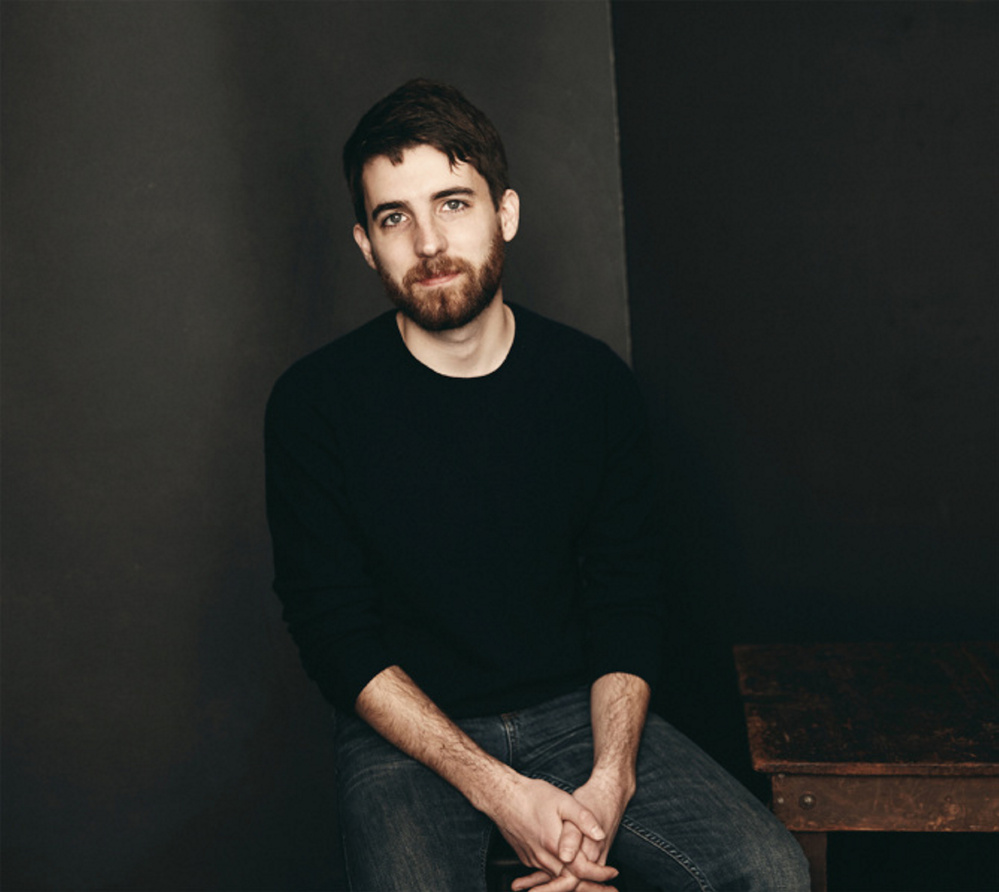For better or worse, people who listen to music are a bit like botanists or bird watchers: When we hear something new, we have a natural urge to categorize it. It may be simply that if we have a new recording, we want to file it where we’re likely to look for it again. But often it’s because we want concise ways to describe new sounds to our friends, using musical frames of reference that mean something to them.
Musicians, on the other hand, often like to defy listeners’ categorizing instinct. Will Mason, the composer and drummer who performed at SPACE Gallery on Tuesday evening, does that better than most. Raised in Maine and now living in New York, where he is completing a doctorate in music theory at Columbia University, Mason recently released his debut recording, “Beams of the Huge Night” (New Amsterdam), a collection of pieces he composed while living in a cabin in central Maine for eight weeks, without electricity, running water or a phone. His set on Tuesday was devoted entirely to music from the album.
The Portland Conservatory of Music, which co-presented the concert with SPACE, put him in its “Dimensions of Jazz” series. You could make a case for that, on the basis of the Will Mason Ensemble’s instrumentation and playing style: Mason is a vigorous drummer, and his group includes a free-blowing alto saxophonist (Curtis Macdonald), an equally spirited oboist (Stuart Breczinski), two electric guitarists (Travis Reuter and Andrew Smiley), a singer (Nina Moffit) and a bassist (Dan Stein) whose solo moments were couched in the slightly bent tones of contemporary jazz.
Yet Mason’s music sometimes veers toward rock. The vigorous drum and guitar introduction of “Door 6,” the third of the five pieces he played on Tuesday, calls to mind Led Zeppelin, and at the center of “Strong, ME,” a distortion-laden guitar solo rings out. In several pieces – most notably his closer, “Dixfield, ME” – you sense the ghost of Frank Zappa shaping assertively angular melodies supported with acerbic harmonies. (That said, the Zappa-like passage in “Dixfield, ME” quickly gave way to a Coltranesque sax solo.)
To me, Mason’s work is indie classical chamber music. His record label, New Amsterdam, is run by a group of composers who pioneered that style, and his music suits the omnivorous indie classical aesthetic. His ensemble plays from tightly written, detailed printed scores (which leave room for improvisatory flourishes). And you periodically hear the influence of Minimalism, both in repeating, propulsive patterns, and in Mason’s use of the voice – wordlessly, as a strand in the ensemble texture, much as Philip Glass used it in his early work.
Mason himself has clearly pondered the style question. In an essay on his website, he writes: “I also am tormented a bit by my training as a music theorist — it can feel downright silly to bring a skill set honed on Schubert and Webern to bear on my own music, which in any event is not fully at ease either in the world of contemporary classical or modern jazz music.”
But for all its identifiable influences, Mason’s music has an irresistible freshness and vitality that helps bring seemingly disparate elements together. His bigger works, like “Finn” and “Dixfield, ME” – each lasting more than 15 minutes – are really suites, with distinct sections that explore contrasting (but not incongruous) musical ideas.
You are tempted to luxuriate in the textures Mason offers in these pieces – the characteristic hollow tone of unadorned Fender Stratocasters, juxtaposed with wild sax and oboe pairings, plaintive, vibrato-free vocal figures and sumptuous, ringing bass lines, to say nothing of Mason’s kaleidoscopic drumming – but before you can get too comfortable with them, he morphs into something new, with different balances, tempos and musical accents.
There is much to be said for music that keeps you wondering what it is, where it came from, and what’s coming next. Mason’s achievement is making the last of those questions the most important.
Mason’s performance was preceded by a short set by keyboardist Ahmad Hassan Muhammad, who performs under the name Kafari, with Henry Redman playing tenor saxophone and drums. Their most interesting work was partly electronic, built on loops made from old jazz recordings by the likes of Paul Motian and Bill Evans. Using his keyboard, Kafari manipulated the loops’ pitch and tempo, altering them nearly beyond recognition and transforming them into backdrops for fluid keyboard and saxophone improvisations.
Allan Kozinn is a former music critic and culture writer for The New York Times who lives in Portland. He can be contacted at:
allankozinn@gmail.com
Twitter: kozinn
Copy the Story LinkSend questions/comments to the editors.



Success. Please wait for the page to reload. If the page does not reload within 5 seconds, please refresh the page.
Enter your email and password to access comments.
Hi, to comment on stories you must . This profile is in addition to your subscription and website login.
Already have a commenting profile? .
Invalid username/password.
Please check your email to confirm and complete your registration.
Only subscribers are eligible to post comments. Please subscribe or login first for digital access. Here’s why.
Use the form below to reset your password. When you've submitted your account email, we will send an email with a reset code.